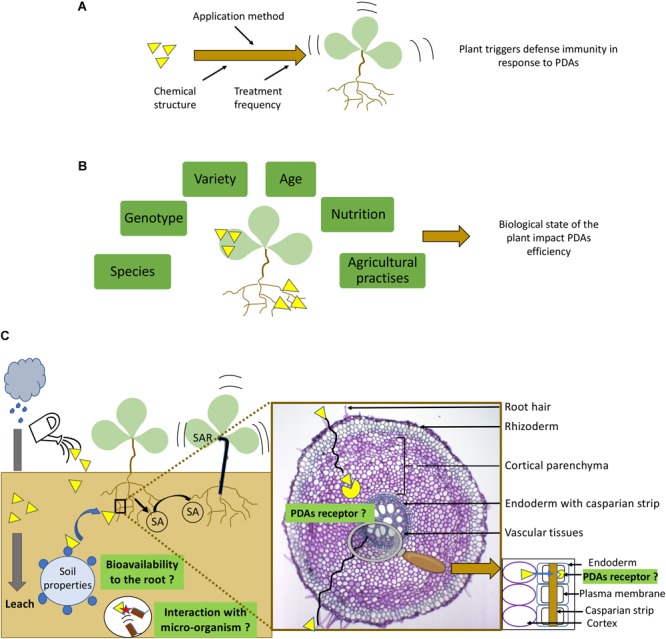FIGURE 2.

Overview of factors influencing plant defense stimulator (PDAs) efficiency in roots. (A) PDAs efficiency to trigger plant defense depends mainly on their chemical structure, on the application method and on treatment frequency. (B) Physiological state of the plant impact PDAs efficiency (Walters et al., 2013). PDAs effect can be different depending on species, plant genotype/variety, age of the plants and their vigor that depends on nutrition and agricultural practices. (C) In the environment, PDAs efficiency are dependent of physical and biological factors. For example, rain or irrigation can induce PDAs leaching. Soil properties and composition can improve PDAs bioavailability (e.g., humic acid) (Molinari and Loffredo, 2006; Molinari and Baser, 2010). Some microorganisms can degrade the PDAs via hydrolytic enzymes. When PDAs is absorbed by the plant, different root tissue can act as natural barrier reducing PDAs efficiency. As a consequence, receptor localization in the root is at the core of PDAs efficiency to trigger plant defense responses. However, it has to be noticed that once PDAs trigger plant responses, roots can release signal molecules such as salicylic acid (SA) (Cheol Song et al., 2016) to induce plant defense in neighboring plant and in non-treated organs such as leaves consisting in the systemic acquire resistance (SAR).  : Plant defense activators
: Plant defense activators  : Plant defense activators receptors
: Plant defense activators receptors  : salicylic acid
: salicylic acid  : Interaction of plant defense activator with microorganisms
: Interaction of plant defense activator with microorganisms
